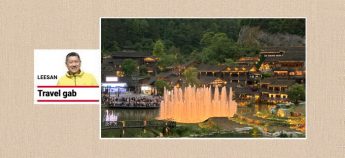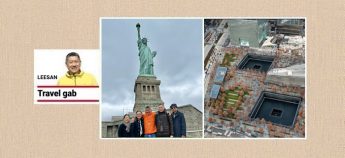Time to go wild – by leesan
The Great migration at the Serengeti National park is one of the best experiences in travel.

The stunning sight of a congregation of wildebeest and zebras traversing the crocodile-infested mara river in the Serengeti National park, tanzania.— photos: Leesan
BETWEEN May and July every year, wild animals in Tanzania’s Serengeti National Park will go on an epic mass migration to the Masai Mara plains in the neighbouring country of Kenya.
The animals taking part in the migration have been travelling for over 365 days, from east to south, and then west to north, covering more than 3,000km.
They move in a clockwise direction in search of food and water.
They also bring their young back to where they started on the banks of Mara River.
The Mara River sets the stage for the annual migration, where more than a million wildebeest, some 300,000 zebras and half a million gazelles cross the crocodile infested waters for more than two months to the opposite bank. The scene of these animals rushing down the cliff and traversing the river is recognised as one of the “Seven Wonders of the Natural World” by National Geographic.
You need a little bit luck in order to catch such a spectacle, as the laws of nature are unpredictable and must not be tampered with.
We followed the instructions our nature guide gave us to wait patiently inside our 4WDs since early in the morning in hopes of catching a glimpse of any change in animal movements.
Instead of complaining or fidgeting, we found that to be an extremely reward experience.
Sitting quietly and observing the movements and routines of wild animals within the world-famous Serengeti National Park was, to us, a meaningful encounter with nature.
Now during the long wait, naturally a few of us needed to use the lavatory. Our driver-guide took us to a grassland where we could do our “business”. But just as a group member started to unzip his pants and relieve himself, he got the shock of his life when he saw, a mere 20m away, a pride of five lions resting! We immediately rushed back to our vehicles for safety.
Apparently, the five lions had just finished devouring a gazelle, leaving only its bones and internal organs. We then realised why a cackle of hyenas were roaming around the area, and why a kettle of vultures were hovering above too.
This is very much how things work in the animal world – the biggest and strongest prey on the weak. Even so, if there were more hyenas around, they could have also attacked the five lions. Chua, one of the tour members, asked, “Are they not savage beasts? Why don’t they attack humans?”
Well, it’s not because they don’t fancy human flesh, but rather, they have not yet sensed our existence, our guide told us.
Even if they have just had a big meal, they can still attack humans especially if they feel threatened.
Who would resist the delectable human flesh, anyway? Aren’t we humans just like the lions, too? Some people who have amassed enormous wealth in unscrupulous ways will always be on the lookout for new prey. Let’s just put it this way: Human lust for wealth and other desires will never be fully satiated.
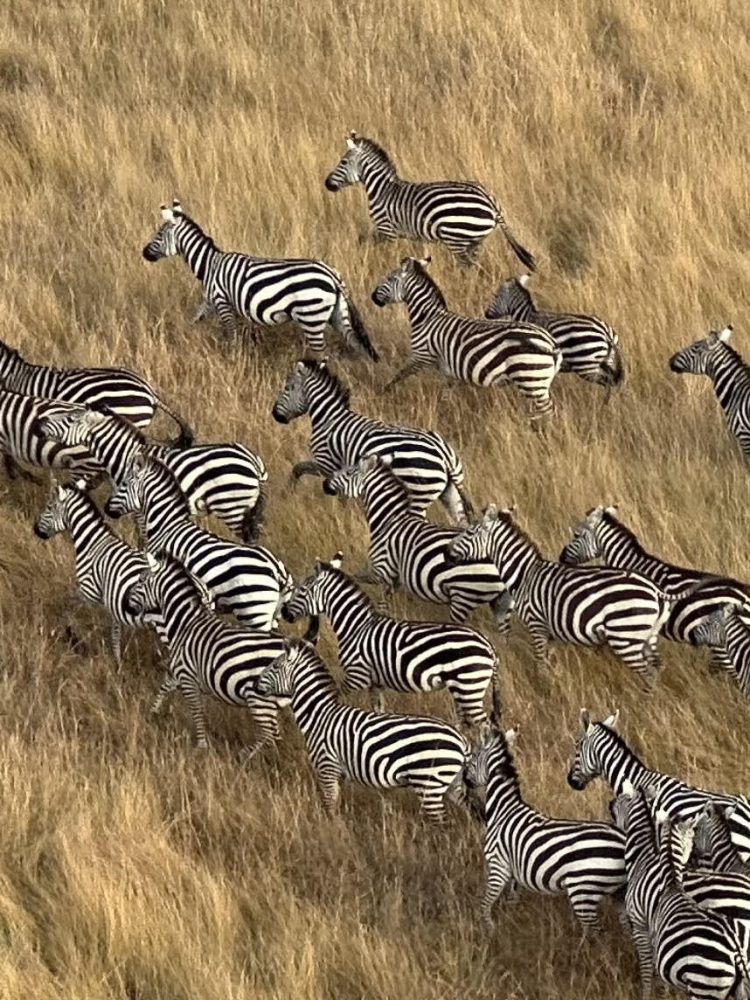
The zebras are the unofficial guardians or protectors of the wildebeest during the Great migration.
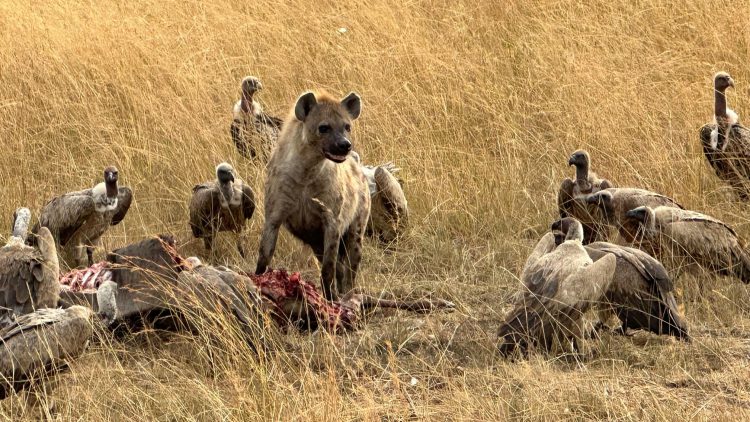
In the animal world, the leftover bones and internal organs from the lion’s meal will be cleared up by the hyenas and vultures.
But back to the Serengeti. Although things during the migration could get pretty bloody, we were privileged enough to see some rare moments involving the animals that were heart-warming. For example, the herd of wildebeest running non-stop towards a common direction. Interestingly, the vanguards that were either leading the way or guarding the herd in the rear were actually a handful of adorable zebras.
From what I learned, these wildebeest start their journey in the wee hours of the morning, and dread the lurking lions, leopards and crocodiles the most.
Notably, the wildebeest have poor eyesight, bad hearing and a sense of smell that is not at all impressive.
On the contrary, the zebras boast much more acute senses, so they take their place as “protectors” or guardians of the silly wildebeest. These two completely different animal species have actually been working together like good buddies for centuries during the Great Migration.
Moreover, the zebras love the upper section of the grass while the trailing wildebeest have a preference for the lower section.
They eat the same food, essentially. It is beyond imagination that in the wild, wild world there is actually such a realistic manifestation of symbiotic existence.
Such a magical display of inter-species civilisation easily shames the human race that claims to have the superior gift of wisdom.
Our guide said: “Look at those hillocks in the vicinity of Mara River. Tens of thousands of wildebeest and zebras have already assembled there. So, does it mean something major is going to happen at any time?” Right at that very moment, my mind was preoccupied with scenes of of troops riding horseback from the film Assembly directed by Feng Xiao-Gang.
The wildebeest and zebras assembling by the steep wall of the cliff kept moving forward. If one of them “accidentally” rolled down the cliff, the rest would just do the same, signalling the crucial moment to cross the river. This is what the guide calls the “first lead”.
Although this sounds unfathomable, it is nevertheless a breaking point in the phenomenal river-crossing part of the migration.
“Look closely … the moment has arrived!” our guide said. We had no idea which of the animals had the prestige or privilege of being “selected” to perform the first lead, but once it happened the rest of the pack immediately started to traverse the rapid waters of Mara River.
The sound of splashing water and the cries of wildebeest shattered the stillness around.
I held my breath as I filmed the spectacle in hopes of recording every bit of detail during this incredible event. All of a sudden the spectators inside dozens of other 4WDs yelled at the sight of a massive crocodile emerging from the river, getting hold of one of the wildebeests. My goodness!
Yet another thrilling act of the strong preying on the weak that we would normally just watch on National Geographic.
The animals at the back which had no idea what’s happening in front kept heading towards the opposite bank as if to joyfully sprint towards a paradise in waiting.
The very same thing occurs in our human world. Political instability, natural and human-induced disasters will usually push people to a corner, prompting them to relocate to places that offer them better opportunity.
That said, whichever place we choose to settle down, we will have to learn to tolerate and adapt ourselves to the many challenges in real life.
Any living thing on this planet desires to live peacefully and safely, but to achieve this is not always easy.
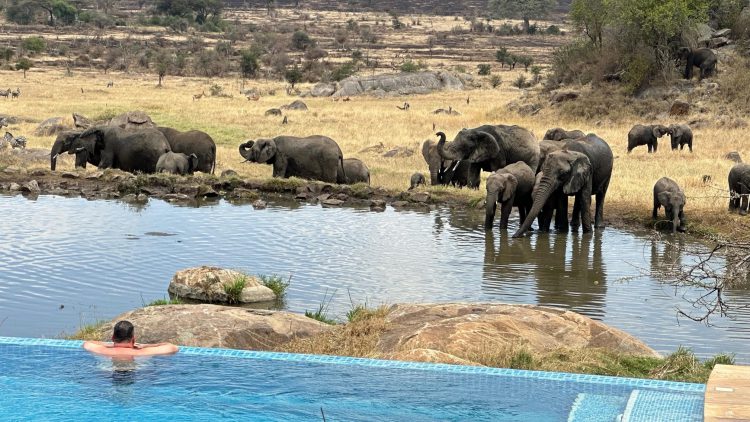
There are plenty of luxurious lodgings in Serengeti National Park, but they are selling out real fast!
Did you know that there are countless animal species thriving within East Africa’s national parks? The gazelles and deer alone have so many different sub-species. Let’s not forget Africa’s biggest animals like the elephants, Mara giraffes, hippopotamus, and rhinoceros.
Visitors to any of the national parks may get the chance to see any or even all of these in one place.
While the Great Migration is … great, it does leave thousands of casualties each time it takes place. But don’t feel bad because every year from late January to mid-February some 250,000 baby wildebeest will be born at the Ngorongoro and Serengeti national parks. These “largescale births” create new lives that will perpetuate the ritual year after year.
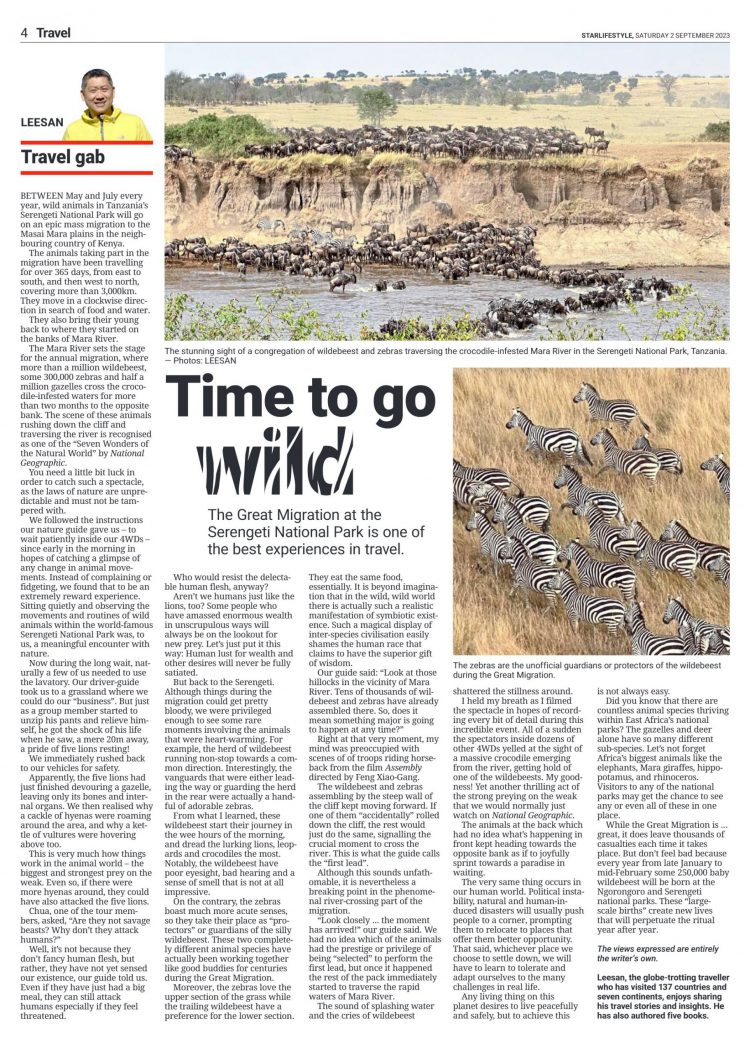
Published in STAR 2, 26 August 2023
全球超过80000家酒店,Apple101助您轻松订房,出行无忧,绝对优惠价。入住期间付款,多数客房可免费取消!

